Addressing the Slowdown of Windows 10: A Comprehensive Guide
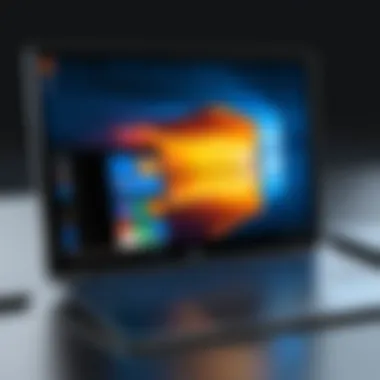
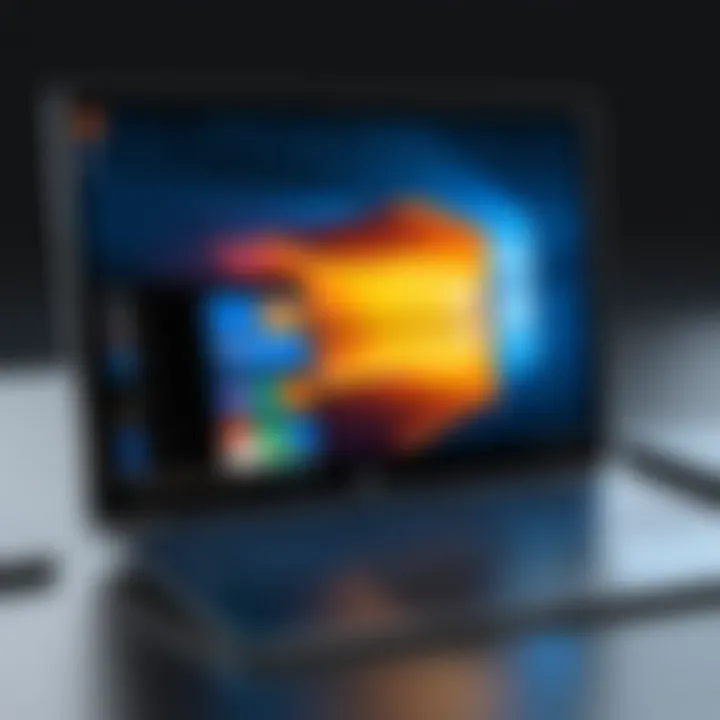
Intro
In today's highly digital environment, many users of Windows 10 notice a slowdown in their system's performance over time. This can be frustrating, especially for those who rely on their computers for productivity, gaming, or personal use. Identifying the reasons behind this decay in speed is crucial. This guide will delve into several aspects affecting your device, providing insightful solutions for optimizing performance.
Windows 10 incorporates numerous applications and features that can accumulate over time, leading to slower response rates and diminished speed. The intention of this article is not only to highlight these issues but also to furnish practical steps and solutions for restoring your system's functionality. Through systematic analysis, we aim to empower users with knowledge and methods to improve their Windows 10 experience.
Key Features
Understanding the core factors that contribute to the slowdown can make it easier to navigate potential solutions. Here are some key features to keep in mind:
Design and Build Quality
The design and build quality of your device can significantly influence performance. Devices with integrated components may not handle extensive multitasking well compared to those with modular designs. Performance can decline in laptops over time due to thermal throttling or dust buildup in the cooling system. Regular physical maintenance is therefore recommended.
Display and Performance
The display setup also plays a role in perceived performance. High-resolution displays consume more memory and processing power, especially when running multiple applications. Users might realize that managing open applications and optimizing display settings can lead to a smoother experience. Reducing screen resolution or closing unnecessary tabs can be an immediate boost.
Contributing Factors to Slowdown
Multiple factors contribute to the slowdown of Windows 10. Here, we will outline some common culprits:
- Outdated drivers: Outdated graphics or device drivers can impede performance.
- Background processes: Numerous applications running in the background use significant system resources.
- Disk fragmentation: Over time, files can become fragmented, slowing access times.
In the next sections, we will detail solutions and best practices to address these issues effectively.
Understanding Windows Performance Issues
Understanding the performance issues of Windows 10 is crucial for any user who wants to maintain an efficient and effective computing experience. As users depend on their systems for personal and professional tasks, a slowdown can impact productivity significantly. This section will explain the different elements contributing to performance degradation, emphasizing diagnostic techniques, and outlining corrective actions to enhance system functionality.
By recognizing the symptoms and causes of performance drops, users can take informed steps to rectify the situation. Additionally, understanding how software and hardware interact provides insight into preventive measures.
Common Symptoms of Slow Performance
Identifying the signs of a sluggish Windows 10 system is the first step towards resolving the issues. Common symptoms include:
- Long boot times: The system takes considerably longer to start up than usual.
- Frequent application crashes: Programs may stop working suddenly, disrupting workflow.
- Lagging input responses: There may be a noticeable delay when executing commands or typing.
- Excessive disk usage: The task manager often shows high disk activity even when applications are idle.
- Slow file access: Opening files or folders may take longer than expected.
Being aware of these symptoms helps users to diagnose their issues correctly and seek specific solutions.
Impact of Software on Performance
Software plays a significant role in determining Windows 10's speed. Several factors must be considered, such as:
- Background processes: Some applications run in the background and consume resources, leading to performance degradation.
- File fragmentation: Programs being installed and uninstalled frequently can cause fragmentation, slowing down data access speeds.
- Malware and bloatware: Unwanted software can substantially slow a system, using precious processing power.
- Outdated applications: Applications that are not kept updated may not run efficiently or may consume more resources than necessary.
Users should regularly monitor installed software and ensure they only keep necessary applications active.
Role of Hardware in System Speed
Hardware components significantly influence Windows 10's performance. Addressing hardware-related issues involves examining several factors:
- RAM capacity: Insufficient RAM can limit the number of processes that can run efficiently at once. Upgrading RAM can lead to notable performance improvements.
- CPU capabilities: A processor with lower performance can bottleneck activities, causing delays in completing tasks according to user commands.
- Hard drive health: The age and condition of a hard drive affect how quickly data is read and written. Solid State Drives (SSDs) generally offer better performance compared to traditional hard drives.
Understanding these hardware aspects allows users to make strategic upgrades and avoid future performance issues.
Analyzing Software Management


Analyzing software management is crucial when addressing the performance issues in Windows 10. As systems become cluttered with applications and files, the operating system's efficiency tends to diminish. A well-organized software landscape not only improves speed but also enhances user experience. By scrutinizing the installed programs and their behavior, users can identify what impacts system responsiveness.
One key aspect of software management is the identification of resource-hungry applications. These are programs that consume considerable amounts of memory and CPU cycles, limiting the resources available for other tasks. Additionally, managing startup applications helps in ensuring that only necessary programs load during boot-up, directly impacting boot times and overall performance. Finally, keeping software and drivers updated minimizes vulnerabilities and maintains compatibility with the latest system enhancements, all of which are vital for longevity and efficiency of the system.
Identifying Resource-Intensive Applications
Resource-intensive applications can severely impact the performance of Windows 10. Programs such as video editing software, graphic design tools, or even web browsers with multiple tabs open can consume significant resources. To identify these applications:
- Use the Task Manager by pressing . Click on the "Processes" tab to examine CPU and memory usage.
- Sort by CPU or Memory to see which applications are consuming the most resources.
- Consider uninstalling or disabling applications not used regularly.
Each unnecessary resource hog can slow down your system, so it's wise to periodically review this list.
Managing Startup Programs Effectively
Managing startup programs is another essential aspect of optimizing Windows 10. Many applications set themselves to launch automatically when Windows starts, leading to longer boot times. To manage startup programs:
- Open the Task Manager and go to the "Startup" tab.
- Review the list of applications set to start at boot. Disable programs that are not essential during the startup process.
- Remember, each disabled application can potentially improve system log-in speed and free up critical resources for everyday tasks.
This not only speeds up the boot time but also improves responsiveness when the system is in use.
Updating Software and Drivers
Keeping your software and drivers updated can dramatically enhance performance and security in Windows 10. Updates may include patches that fix bugs or optimize performance, thus, failing to install updates can lead to slowdowns. To handle updates efficiently:
- Regularly check for Windows updates by navigating to Settings > Update & Security > Windows Update.
- For individual applications, check their settings or official websites for updates.
- Don't forget about drivers, particularly for graphic and network cards. Using manufacturer tools like NVIDIA GeForce Experience or AMD Radeon Software can streamline this process.
Regular software and driver updates are integral not only for performance but also for security.
Incorporating these measures into your software management routine can lead to a more responsive and agile operating system.
Investigating System Settings
Understanding system settings is critical when addressing slow performance on Windows 10. System settings dictate how your operating system manages resources, which can have a substantial impact on your computer's speed and efficiency. By tweaking certain configurations, you can enhance your system's responsiveness and overall user experience. Each element, from visual effects to power settings, plays a role that users can leverage to mitigate sluggishness.
Adjusting Visual Effects for Performance
Windows 10 offers an array of visual effects that enhance the aesthetic appeal but can demand significant resources. Animations, shadows, and transparency may provide a pleasing experience but can hinder performance, especially on modest hardware configurations. By adjusting these effects, you can free up critical system resources.
To modify visual effects:
- Right-click on This PC on the desktop.
- Select Properties.
- Click on Advanced system settings.
- In the Performance section, click Settings.
- From there, you can choose Adjust for best performance, which disables all visual effects, or manually customize selections.
This adjustment is particularly useful for users experiencing lag during intensive tasks. It’s advisable to strike a balance between aesthetics and functionality, ensuring your system remains user-friendly without sacrificing speed.
Optimizing Power Settings
Power settings can significantly influence system performance. Windows 10 provides various power plans designed to meet different usage scenarios. For users seeking enhanced performance, selecting a high-performance plan is often beneficial. This configuration minimizes power-saving features that can throttle processor speeds.
To access power settings:
- Right-click the battery icon in the system tray.
- Select Power Options.
- Choose High performance to or expand Change plan settings to customize further based on your needs.
Remember that running on a high-performance plan may lead to increased energy consumption. Therefore, consider this adjustment primarily when connected to a power source.
Managing Disk Cleanup and Storage
Disk space management plays a significant role in system performance. If your hard drive is near capacity, Windows 10 can exhibit diminished responsiveness. Regularly executing disk cleanup can reclaim storage space and help maintain seamless operations.
To perform disk cleanup:
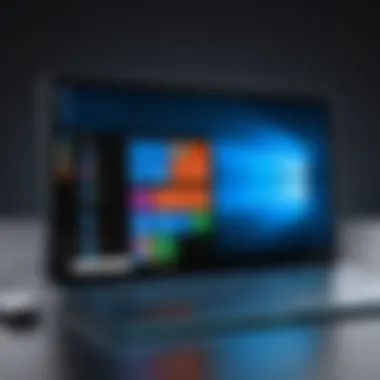
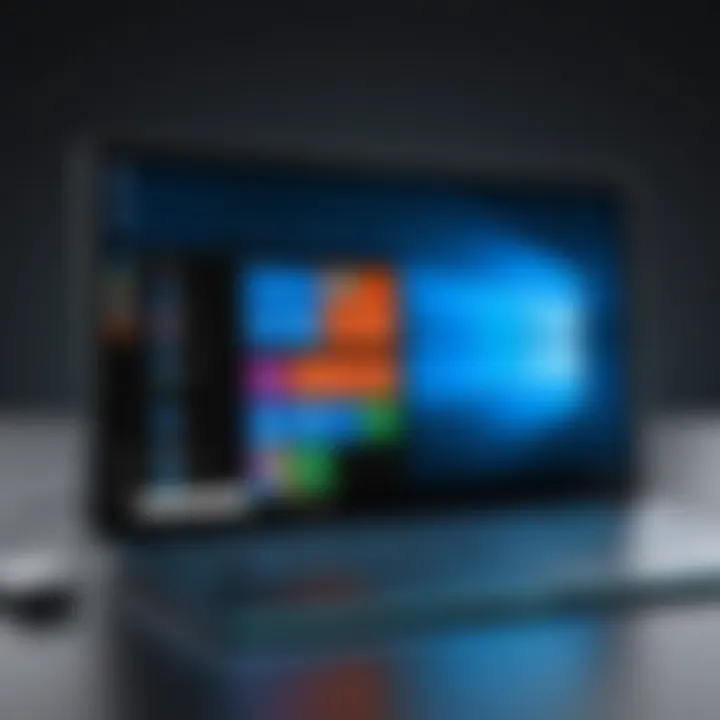
- Type Disk Cleanup in the search bar and open the application.
- Select the drive you wish to clean (usually C:).
- Check the boxes next to the file types you want to delete, such as temporary files and system cache.
- Click OK and confirm the cleanup.
Additionally, organizing files and uninstalling unnecessary applications can enhance your storage management strategy. A well-managed disk will not only improve performance but may also reduce errors associated with insufficient storage.
Regular maintenance of system settings, including visual effects, power options, and storage management, can dramatically enhance the user experience in Windows 10.
By focusing on these areas, users can implement changes that help counteract performance issues effectively, ensuring Windows 10 operates as intended.
Evaluating Hardware Considerations
Evaluating hardware is crucial for understanding the overall performance and efficiency of a Windows 10 system. Often, users focus on software management and neglect the underlying hardware, which can lead to inadequate performance. This section explores key hardware components and their direct impact on system speed, helping users assess their setup for potential improvements.
Determining RAM Requirements
Random Access Memory (RAM) plays a significant role in how efficiently a computer handles tasks. Insufficient RAM can lead to slow performance, especially when running multiple applications. Windows 10 typically requires a minimum of 4 GB for basic functionalities, but this is often not enough for multitasking or more demanding applications.
To determine optimal RAM for your needs, consider the following:
- Basic Usage: For web browsing, document editing, and streaming, 8 GB is generally sufficient.
- Gaming: Modern games often require 16 GB for optimal performance.
- Professional Applications: Software used for video editing, 3D modeling, or development can benefit from 32 GB or more.
Upgrading RAM is often the most cost-effective solution to improve system speed. It is a straightforward process, depending on your device's compatibility.
Assessing CPU Limitations
The Central Processing Unit (CPU) is the brain of your computer. A slow CPU can bottleneck performance, even when other components are adequate. It’s important to understand the capabilities of your CPU and how it aligns with your usage needs.
When assessing CPU limitations, consider:
- Clock Speed: Measured in GHz, higher speeds indicate better performance.
- Core Count: Modern applications benefit from multi-core processors, making 4 to 8 cores ideal for multitasking.
- Generation: Newer generations of CPUs typically offer enhancements in power efficiency and processing speed.
If your CPU is outdated and frequently causing slowdowns, consider upgrading to a newer model that supports faster speeds and better multitasking capabilities.
Examining Hard Drive Health
The health of your hard drive directly influences your system's overall performance. Slow read and write speeds can manifest as sluggishness, particularly during boot times or when launching applications. Both Mechanical Hard Drives (HDD) and Solid-State Drives (SSD) have unique characteristics affecting performance.
To examine hard drive health, look at these factors:
- Type of Drive: SSDs are significantly faster than HDDs in terms of read/write speeds. Upgrading from an HDD to an SSD can dramatically improve load times and responsiveness.
- Disk Fragmentation: For HDDs, fragmentation can cause delays. Regularly performing disk defragmentation can help maintain speed.
- Health Status: Use tools like CrystalDiskInfo to check for issues such as bad sectors or temperature problems that can affect performance.
"An investment in hardware is often a direct investment in your productivity and enjoyment of the computing experience."
Taking the time to optimize and maintain hardware can lead to significant improvements in performance, allowing users to make the most of their Windows 10 experience.
Exploring External Factors
Understanding the external factors that contribute to the slowdown of Windows 10 is crucial for users seeking to enhance their system's performance. Many users often focus only on internal hardware and software issues, neglecting potential external elements that can profoundly impact overall functionality. This section will discuss how malware and viruses, interference from third-party software, and network connectivity can affect system performance. By addressing these factors, users can create a more efficient and streamlined computing environment.
Impact of Malware and Viruses
Malware and viruses are notorious for causing system slowdowns, and their presence can lead to extensive performance issues. This malicious software can consume system resources, leading to increased CPU usage and memory consumption. Symptoms of infection might include slow boot times, unexpected pop-ups, and unusual system behavior.
To mitigate the risks from malware, it is essential to employ reliable antivirus software. Regular scanning of the system can help detect and remove potential threats. Users should also practice safe browsing habits by avoiding suspicious websites and downloading software from untrusted sources. Keeping the antivirus updated ensures that it can recognize the latest threats. Regular updates to Windows 10 can also patch vulnerabilities that malware may exploit.
Interference from Third-Party Software
Third-party software can be both a boon and a bane. While these applications extend functionality beyond the native capabilities of Windows 10, they can also lead to performance issues if not properly managed. Applications that run in the background may consume valuable system resources, leading to a noticeable slowdown.
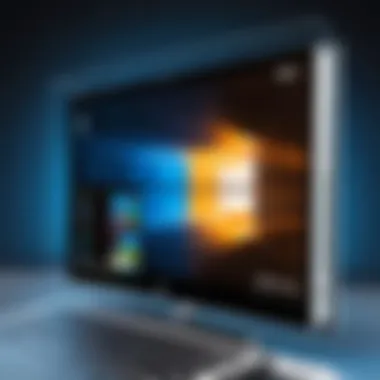
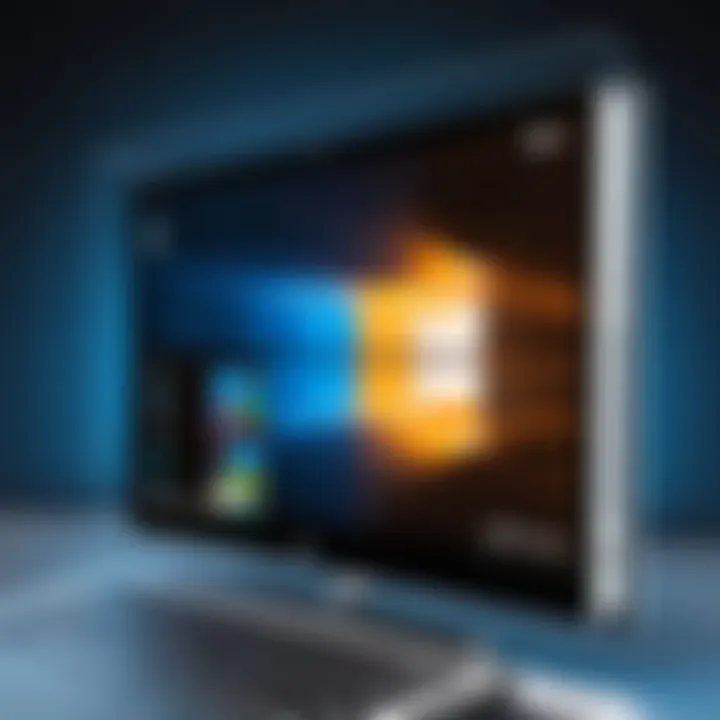
To effectively manage Third-party software interference, users should regularly review its installation. Uninstalling applications that are rarely used can free up resources. Additionally, considering alternatives that are lighter on system resources is advisable. Moreover, limiting the number of applications that start up with the operating system can significantly improve boot times and overall responsiveness.
Network Connectivity Issues
Network connectivity problems can impact not only internet speed but also the overall performance of apps that rely on the network. Frequent disconnects or reduced bandwidth can result in software lag, making it difficult to execute tasks smoothly.
To address network issues, users should first assess their internet connection speed. A speed test can provide insight into whether the connection is adequate for the required tasks. If slow internet is frequent, exploring options with the Internet Service Provider may be necessary. Additionally, optimizing the router settings or switching to a wired connection can enhance overall stability. Ensuring that other devices are not hogging bandwidth can also lead to a more robust network performance.
"External factors such as malware, software interference, and network issues can quickly degrade the performance of Windows 10 systems, making it crucial to address them proactively."
By examining these external elements, users can take proactive steps to mitigate their effects on system performance, leading to a smoother computing experience.
Practical Solutions to Improve Performance
Performance degradation in Windows 10 can severely influence productivity and overall user satisfaction. While understanding the underlying causes of this slowdown is crucial, implementing practical solutions offers a pathway to restoring system efficiency. This section serves as a roadmap for users seeking to enhance their system's responsiveness through effective actions and adjustments.
Implementing Regular Maintenance Routines
Regular maintenance routines play a vital role in keeping Windows 10 systems running smoothly. Neglecting these practices can lead to a gradual decline in performance, as accumulated clutter and outdated components slow down the operating system. By dedicating time to perform routine checks and clean-ups, users can preemptively address potential issues.
Some key routines include:
- Disk Cleanup: Use the built-in disk cleanup tool to remove temporary files and system cache that build up over time. This helps free up valuable storage space and enhances system responsiveness.
- Defragmenting Hard Drive: For traditional hard drives, periodic defragmentation can optimize file storage and retrieval, reducing loading times and increasing overall speed. Note: SSDs do not require defragmentation.
- Regular Updates: Keeping the Windows operating system and all installed applications updated ensures that users benefit from the latest performance improvements and security patches.
Adopting these maintenance practices fosters a healthier system environment, leading to sustained performance.
Upgrading Hardware Components
Although software optimizations are essential, sometimes hardware limitations are the primary culprits of performance issues. Upgrading hardware components can significantly enhance the performance of a Windows 10 system. Users must evaluate their current hardware and identify potential upgrades that can provide the most impact.
Common upgrades to consider include:
- Increasing RAM: If a system frequently runs out of memory, adding more RAM can alleviate slowdowns, especially when multitasking.
- Upgrading to SSD: Switching from a traditional hard drive to a solid-state drive can dramatically reduce boot times and improve application loading speeds.
- Graphics Card Enhancements: For users who engage in gaming or design activities, a better graphics card can enhance visual performance and responsiveness.
Evaluating and upgrading hardware components ensures that a system meets users' demands, especially as software requirements evolve over time.
Utilizing Performance Monitoring Tools
To tackle performance issues systematically, utilizing performance monitoring tools can provide valuable insights. By actively observing system resource usage, users can identify bottlenecks and resource hogs. These tools allow for better decision-making regarding how to allocate system resources for optimal performance.
Some notable performance monitoring tools include:
- Task Manager: A built-in Windows tool that provides an overview of CPU, memory, and disk usage, helping users identify which processes are consuming the most resources.
- Resource Monitor: Offers deeper insights into how system resources are being utilized, allowing users to analyze performance in greater detail.
- Third-Party Tools: Applications like CCleaner or HWiNFO can provide additional insights and enable users to manage system resources more effectively.
By consistently employing performance monitoring tools, users can maintain a keen awareness of their system's health, proactively addressing issues before they escalate.
Long-Term Strategies for Sustaining Performance
Sustaining performance on Windows 10 is essential for users who rely on their systems for various tasks. Long-term strategies can prevent slowdowns and ensure a smooth user experience. Implementing these strategies provides multiple benefits. They not only enhance the system's responsiveness but also extend the lifespan of hardware components. Considerations include the nature of software usage, component upgrades, and keeping up to date with system changes. A proactive approach is often more effective than reactive fixes.
Establishing Best Practices for Software Usage
Best practices in software usage can make a significant difference in system performance. Start with evaluating installed applications. Remove any unnecessary or rarely used programs, as these consume valuable system resources. Regularly check for updates for the software you do use, as updates can include important performance enhancements and security fixes. Additionally, consider optimizing settings within applications. For instance, disabling unnecessary plugins in a browser can reduce memory usage. Adopting a routine of keeping the desktop and folders organized can help manage files efficiently. Finally, utilize cloud storage solutions where possible to free up local space.
Adopting Hardware Upgrade Cycles
Hardware upgrades play a crucial role in maintaining the performance of Windows 10. Core components like RAM, CPU, and storage devices can directly impact system speed. Evaluate the current hardware specifications against software needs. For most users, increasing RAM can lead to noticeable performance gains. This is especially true when running multiple programs or applications intensive on memory. Additionally, consider upgrading to a Solid State Drive (SSD). It significantly improves boot times and application launch speeds. Establish a regular cycle to review hardware and assess if further upgrades or replacements are needed.
Staying Informed About System Updates
System updates are vital for the longevity of Windows 10. They often include performance improvements, updated drivers, and security patches. Staying informed about these updates ensures that your system is running optimally. Regularly check for both major updates and minor patches. It is advisable to enable automatic updates, as this can ease the burden of manually checking for changes. However, it is also prudent to occasionally review update notes to understand the changes being implemented. Some updates may require a restart, so plan accordingly to minimize disruptions in workflow.
"Keeping your system updated is one of the simplest and most effective ways to maintain performance over time."
In summary, the implementation of long-term strategies is key to sustaining the performance of Windows 10. By establishing best practices for software usage, adopting a routine for hardware upgrades, and staying updated with system changes, users can significantly enhance their computing experience.



